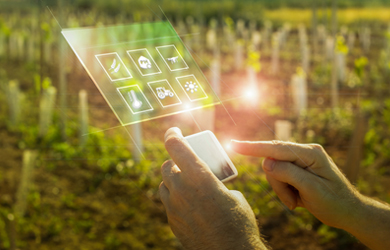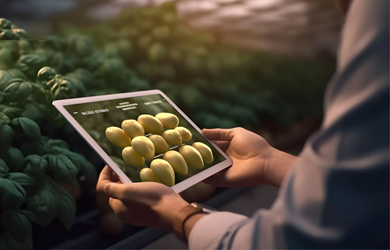How Agritech is Making Date Palm Cultivation in the Middle East Profitable
Date palm cultivation in the Middle East was historically being carried out for the purpose of sustaining human life and as a tradition. Arab countries possess the maximum percentage of date palms cultivated around the world and are responsible for the largest global date production. The advent of agritech has bolstered their efforts as the quality and quantity of yields has grown immensely.
The government’s investment in modern technologies that support agricultural production has also allowed innovation and development in date cultivation. With new-age farming techniques based on cutting-edge technology solutions, date palm cultivation in the Middle East has successfully become a profitable avenue for agribusinesses and enterprises.
Major Difficulties of Date Palm Cultivation in the Middle East
Despite the significant contribution of the date palm to the agrosystems in the Middle East, it has recently been confronted with several issues. Over the past years, date palm groves in the region have been subjected to degradation due to extensive exploitation resulting from increased human population and domestic animals. Similar to many other plants, some date palms are at the risk of dying due to rigorous human activities.
Given its adaptation to the dominating harsh climatic conditions such as long drought periods and extreme temperature, the date palm has been one of the most appropriate crop plants for cultivation in the Middle East. However, water scarcity and salinity, soil erosion, desertification, and overall climate change have resulted in enormous losses for date palm farmers.
Pest infestations and diseases have been threatening the sustainability of date palm cultivation in the Middle East. Yet, most farmers are still not focusing on optimising water and fertilizer usage, enhancing disease resistance, and upgrading field monitoring measures. This can yield accurate estimates and can help achieve the cost-saving goals. As a result, seeking technologically advanced solutions to these challenges has become imperative, not only to save the date palm trees but to also help farmers in reversing the mounting financial loss associated with date palm cultivation.
The Future Lies in Agricultural Technologies
The rise of advanced technologies such as the Internet of Things (IoT), artificial intelligence (AI), drones, and robotics and their growing applications in agriculture is expected to create unparalleled opportunities for date palm cultivation in the Middle East. Smart precision agriculture, in general, uses modern information and wireless communication technologies to overcome the challenges in the agricultural processes. Therefore, technologies can be utilised to monitor the date palm trees to track their health and performance, detect harmful pests, identify water and resource requirements, and ultimately manage the entire journey of each crop.
Weather stations that analyze data from satellite images and drones are proving to be perfect partners for farmers for date palm cultivation in the Middle East. Agricultural drones are covering plots of large areas within a short time and recording high-precision data. Subsequently, the processing of these data and images facilitate the identification of affected areas, thus allowing farmers to precisely target the area with appropriate remedies. This further helps limit the use of fertilisers and pesticides, manage irrigation, and improve crop management to yield good quality harvests.
IoT Making Headway in Pest Control of Date Palms
Pests pose a significant threat to date palm cultivation in the Middle East. For years, it has been difficult to recognize and subsequently manage pests due to their vague behaviour and inherent biological characteristics. As a result, recent pest control systems are making use of the Internet of Agricultural Things (IoAT), in addition to deep learning modules and image processing technologies.
These technologies provide a solution for continuous health monitoring of date palm trees against the most harmful pests. Studies are also underway to enable the detection of these pests in early stages to eradicate them and minimize the likelihood of date palm tree damages.
Weather Stations Mitigating Climate Change Impact on Date Palms
Date palm cultivation in the Middle East is likely to undergo significant changes in the near future as a consequence of climate change. An increase in temperature, the main factor influencing date palm cultivation in the Middle East, as well as disrupting rainfall will cause crop diseases and significant losses in yield.
Modern digital tools such as weather stations can enable climate-smart agriculture and reduce the climate change threats on date palm cultivation in the Middle East. It involves applying inputs such as fertilizers and other nutrients in precise and informed ways. Along with sensor-based weather stations, map-based GPS systems can also be helpful to modulate the inputs and improve crop management. Furthermore, it minimises the application of potentially-harmful pesticides and fungicides, thereby increasing crop productivity.
This way, leading-edge technologies such as artificial intelligence, machine learning, cloud computing, satellite imagery, etc are enabling real-time tracking, mapping, and monitoring of date palm cultivation in the Middle East. Geotagging of plants and plots, and decision analytics are also providing vital insights into several untapped areas of date palm cultivation in the Middle East. To know more about how agritech can help your date palm cultivation operations in the Middle East, get in touch with us.





